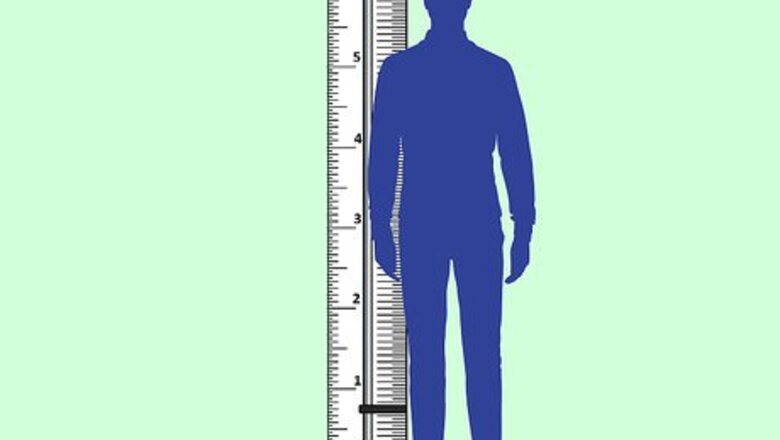
views
Measuring for Custom Clubs
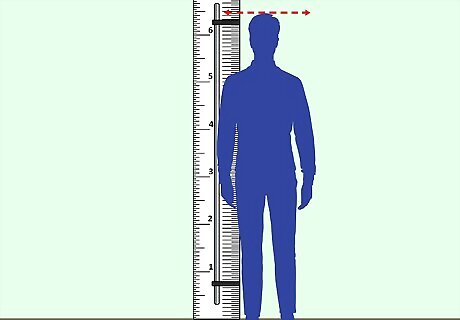
Measure your height. Clubs are matched to your height and the distance between your hands and the ground. To find the right size clubs for your body, use recent height measurement to determine the proper angle for your clubs. It usually helps to have another person measure, so you get the most accurate measurements possible. Measure your basic height from the top of your head to the bottom of your feet. Stand up as straight as possible to get the measurement. You don't need to be in your swing stance.

Measure your wrist-floor length. The other essential measurement that you'll need is the distance between your wrists and the ground. Stand as straight as possible, letting your arms hang loosely at your sides. Ask your helper to measure from the top of your wrist, where the top of the club would be, to the floor.

Swing a standard-length club at the store. If you're considering investing in custom clubs, these two basic measurements will give you specific angle information and a plus-or-minus length requirement based on the standard club length. In other words, height and wrist-floor are the only measurements you need before you head to the store and talk to a club-fitter about custom clubs. Typically, size-fitters will work with you to examine your swing on a standard-size club and use your measurements to determine which clubs will be most appropriate for your style of play. Alternatively, it's good for the fitter to see you swing the clubs you already own and play with regularly to see what might make for a good corrective size, helping to address any inconsistencies in your swing. Standard size golf club lengths are different for men and women. Each club, from the driver to the wedge, also has it's own standard length, so you must be fit each type. If you want to do a quick-check of your measurements and get a sense of your plus-or-minus length score, you can plug your numbers in here.

Provide your handicap. If you play with a handicap, it can be helpful to provide it when you head to the pro shop to check out clubs. If you're not sure of your handicap, a basic description of your skill level can go a long way in helping the fitter match you with the right kinds of clubs that will help improve your game. One of the most common reasons for just buying clubs off the rack is that golfers say, "I'm not good enough for a custom club." In fact, players with a higher handicap have a game that can be much more drastically improved with the use of custom-fit clubs that help to train the swinging motion properly.
Finding the Right Flex and Grip
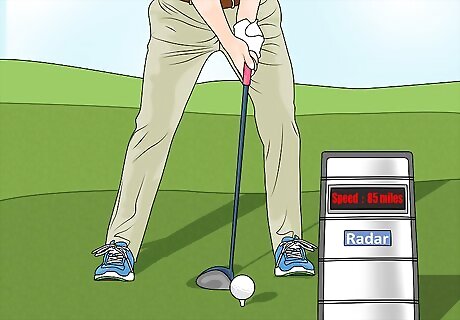
Determine your swing speed, if possible. When you're sure you've nailed down the proper length and angle of the clubs you need, the next step in the customization process is figuring out what kind of flex and grip works best for your particularly style of play. To do this, most custom fitters will want to watch you swing, but you can also provide some of the basic information necessary yourself to figure out what will improve your game the most. To determine your swing speed, you'll likely need access to an electronic launch monitor and a radar machine available at most high-end pro shops. It'll be difficult to do at home. In general, though, most amateurs fall somewhere in the neighborhood of 80–85 mile (129–137 km)-per-hour swings. In general, people with faster swings prefer stiff shafts on their woods and iron shafts on the irons. People with slower swings are more likely to prefer flex shafts on the woods and graphite shafts on the irons.

Keep track of how far you consistently hit your drive. When you're hitting with your wooden drivers, it's helpful to keep track of your average drive on each different club, which can help to match you with a properly flexed set of drivers. Follow the guidelines below to determine the flex your woods should have. Less than 180 yards (165 meters), use ladies flex. Between 181 to 200 yards (166 to 183 meters), use senior flex. Between 200 to 235 yards (183 to 215 meters), use regular flex. Between 236 to 275 yards (216 to 251 meters), use stiff flex. More than 275 yards (251 meters), use extra-stiff flex.

Determine the right flex for your irons. Determining iron flex will depend on which club you generally use to hit a shot of 150 yards (137 meters). So, in other words, if you were lining up to take a 150 yard shot, which club would you reach for? If a 4 or 5 iron, ladies flex. If a 5 iron, senior flex. If a 6 iron, soft regular flex. If a 7 iron, regular flex. If a 7 or 8 iron, firm flex. If an 8 iron, stiff flex. If a 9 iron, extra stiff flex.
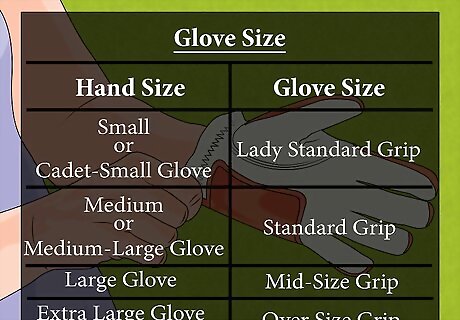
Fit each club wearing golf gloves. A golf glove should fit snugly without wrinkles or creases, working with the grip on the individual clubs to give you the most secure and comfortable contact possible. In general, the larger your glove size, the larger the grip you should use. Grips range from a standard ladies size to an oversized men's grip. The wrong grip can cause friction and disrupt an otherwise perfect swing. Use the pinch test to determine golf glove fit. You should have just a pinch of material at the tips of the fingers and absolutely no pinch in the palm of your hand. Use the size of the properly-fitting glove to get the right grip: If you use a small or cadet-small glove, use a lady standard grip. If you use a medium or medium-large glove, use a standard grip. If you use a large glove, use a mid-size grip. If you use an extra large glove, use an oversize grip.
Choosing the Right Clubs

Talk to a golf pro. No, you don't have to call up Tiger to get advice. A "pro" is a person who works in the golf shop and teaches lessons, the golf equivalent of a personal trainer. It's useful to get a pro to help you learn more about your shots and your needs from a set of clubs. It can be tricky for non-experts to tell whether high and low shots are caused by improper technique or poorly fitted clubs.
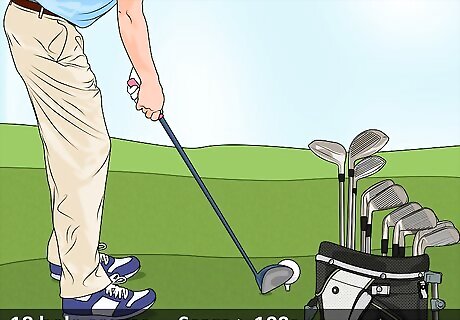
Try a lot of different clubs first. If you're considering investing in a set of custom clubs, it's a good idea to establish a play style and get experienced before investing in a brand new set. Focus on developing a consistent swing, getting your score below the 100s on a standard 18 hole course before you invest the big money sets. Ask golfing buddies, family, or golf shop employees to let you try different clubs on the driving range. You can predict what you're going to like a little bit based on your height and swing speed, but a lot of it is also personal taste. Choose a standard club to practice.

Get the right clubs for your loft. The "loft" of particular clubs is based on how your shots tend to fly, which is another reason you need some experience in order to be properly fitted. If you notice that you're consistently hitting higher than you'd like, try to go for less loft in your clubs. If you're hitting a bit lower than the ideal range, you might prefer a higher loft.
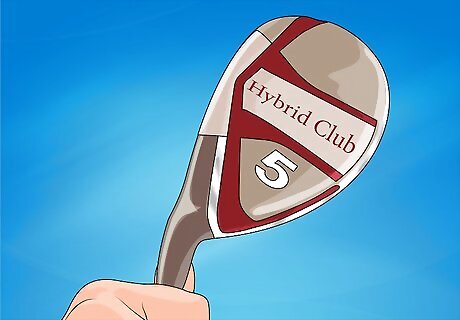
Consider getting some hybrid clubs. Some experienced golfers like to use long irons or hybrids to fill the gap between a 5 iron and your woods. Some people swear by hybrid clubs, while other people prefer the low irons. Only time on the course and range will really tell you what you like and what works best for you.

Go with what feels right. There's no ideal size. Even the "custom" numbers are less important than what you feel comfortable playing. If you're going to invest in an expensive set of clubs, make sure you enjoy playing with it. Try out short clubs in various situations from various distances and see what works for your style. Head to any Golfsmith and there will be a small putting area for testing clubs. Try not to get distracted by all of the crazy looking options and focus instead on which ones you're actually getting the ball into the hole with.










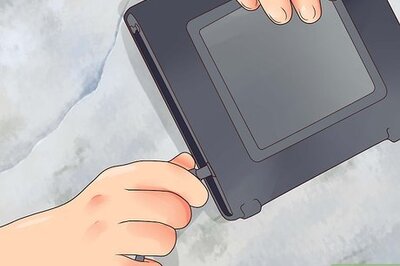
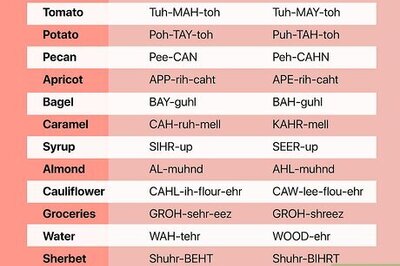




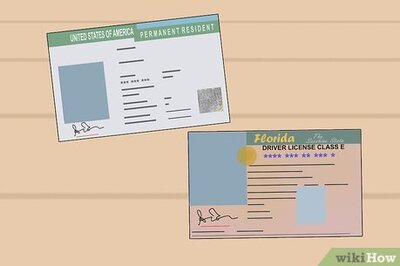
Comments
0 comment